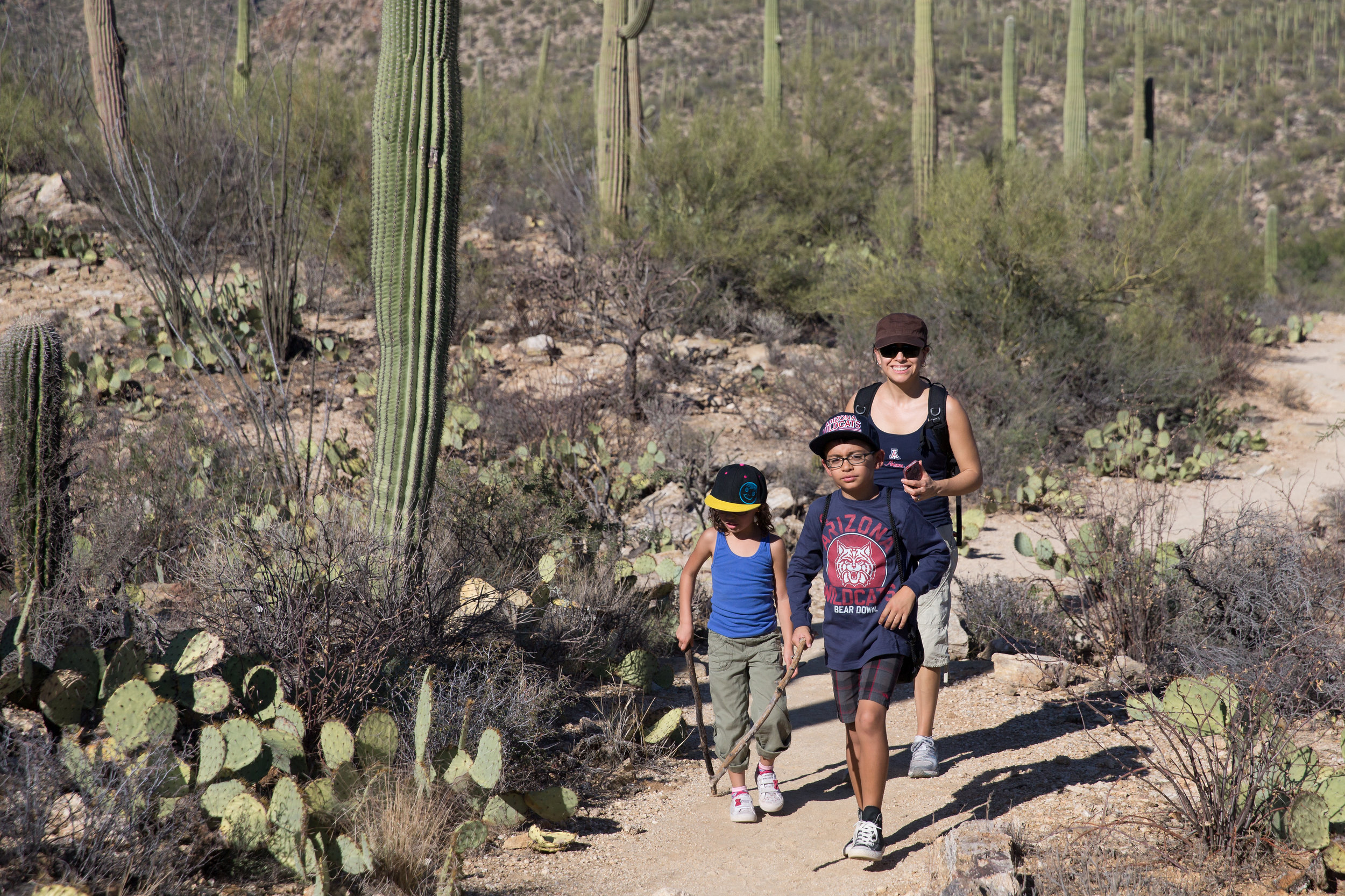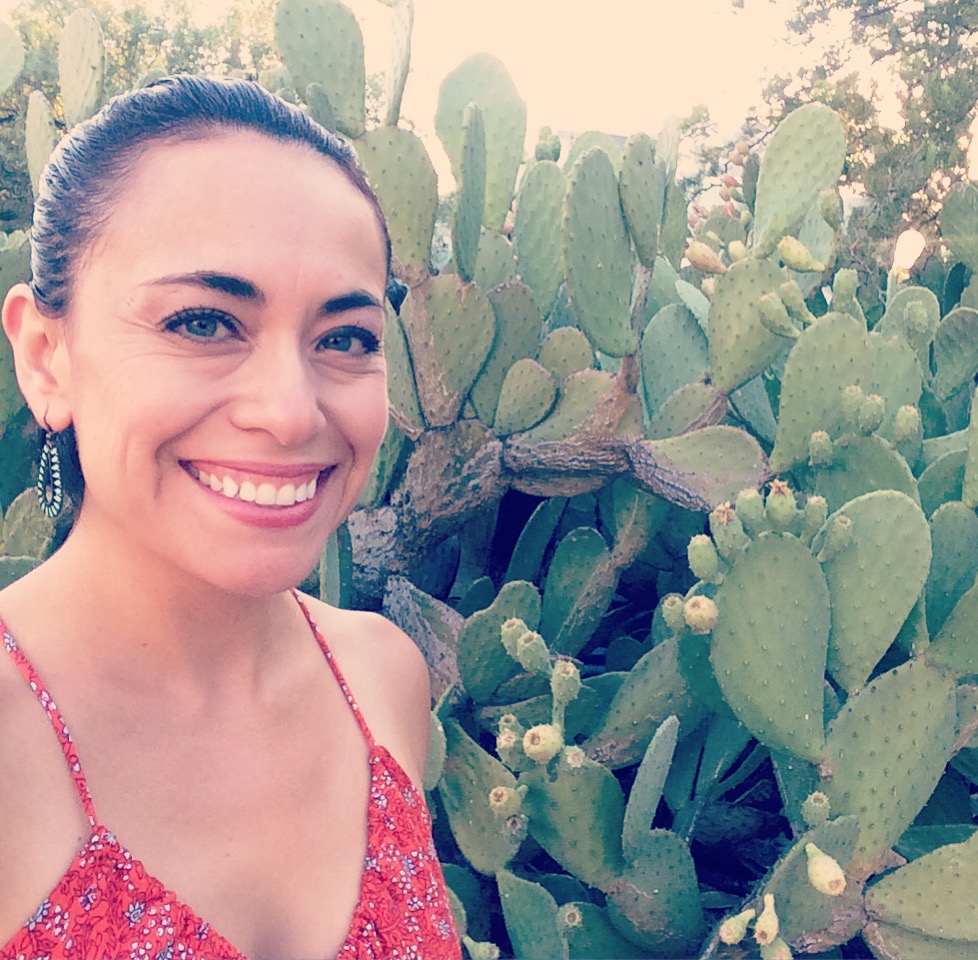The first time I tried nopales, I was working at a community health clinic in Dallas, Texas. One of my patients brought in a big jar of her homemade nopales salad. With a huge grin on her face, she coaxed me and said, "Purebalo! Te va gustar. Nopalitos son muy saludables!" (Translation: Try it! You'll like it. Cactus is very healthy!)
To me, this "salad" looked more like fresh salsa. Nevertheless, the mixture of cooked cactus pads with diced tomato, onion, garlic, lime juice and a combination of dried and fresh seasonings was so fresh and bright, I could not stop eating it. Although I (somewhat reluctantly) shared her homemade concoction with my coworkers, all I really wanted to do was eat the entire jar of this stuff all by myself! So what exactly are nopales and what makes them so special? Let's explore...
Nopal means cactus in Spanish. Nopales is the term often used for the cactus stem and nopalitos typically refers to the fleshy oval prickly pear cactus pads or paddles once they are cut up and prepared for eating. Prickly pear cactus grows all over the desert southwest, northern Mexico as well as in many areas in the Mediterranean. Not only are the cactus pads cooked and prepared in various ways, the prickly pear fruit ("tuna") growing on the rim of the pads are also made into syrups, jellies and juices. Nopalitos can be prepared in a salad like the one I've shown you below, added to scrambled eggs, to stews, grilled meats or eaten as a side vegetable dish. Fortunately, jarred cactus is found in many conventional grocery stores today, allowing those of us who don't always have the time to prepare the raw product the convenience of eating it all year long!
Nutritionally, cactus has gained a positive reputation because it is a good source of fiber, beta carotene, iron, vitamin C and calcium. One cup of cooked cactus has less than thirty calories, and less than five grams of carbohydrates--three of which are from fiber and less than two from natural sugar. (Source: USDA) This makes cactus a food that people with diabetes can include into their diets without fear of it causing high blood sugar levels. It also provides a quarter of your daily calcium needs and about 15% of your daily vitamin C needs.
*Check out my video at the end of this page that takes you though how to prepare this delicious Nopales Salad recipe. Many thanks to Makiah Fox and Second Nature Productions for doing an amazing job on our first video! More to come, so keep your eyes out, everyone!
*For a great tutorial on how to clean and prepare fresh nopales, check out Pati Jinich's website.
Nopales Salad (Cactus Salad)
Recipe by: Christy Wilson, RD
Servings: 4-6
Total time: 15 minutes
Ingredients
- 1, 30 ounce jar of nopales (or "nopalitos"), drained and rinsed
- 1 teaspoon canola oil
- 1/3 cup sweet onion, diced
- 1 clove garlic, smashed and diced
- 1 cup vine-ripened tomatoes, diced
- 3 tablespoons fresh lime juice
- 1/2 cup cilantro, chopped
- 1/2 teaspoon dried Mexican oregano
- 1/8 teaspoon ground pepper
- 1/4 cup queso fresco (or Cotija or Feta cheese)
- 1 avocado, diced
Directions
- Drain and rinse jarred noplaes. Pat dry with a clean dishcloth or paper towel to soak up excess water. Place nopales in a large bowl and set aside.
- Over medium heat, add oil to a small skillet and add diced onion and garlic. Sauté until fragrant and translucent, about 3 minutes. Remove from heat. Allow to cool slightly, then add to nopales.
- Add diced tomatoes, lime juice, cilantro, oregano and pepper into the bowl and mix all ingredients together. Top with crumbled queso fresco (or alternate cheese options) and diced avocado.
- Chill in refrigerator or serve immediately.
Enjoy! Buen provecho!
Nopales out of a jar may not be the prettiest looking food in the world, but they sure are easy to work with!
Quickly sautéing the onion and garlic is a personal preference. You can keep them raw in the salad if you'd like.
Rinsing the jarred nopales is another personal preference of mine. It helps remove the slime from the cactus, it reduces the sodium.
Colorful, beautiful ingredients.
Nopales salad is an easy and nutritious side dish that is bursting with color, flavor and nutrition!





